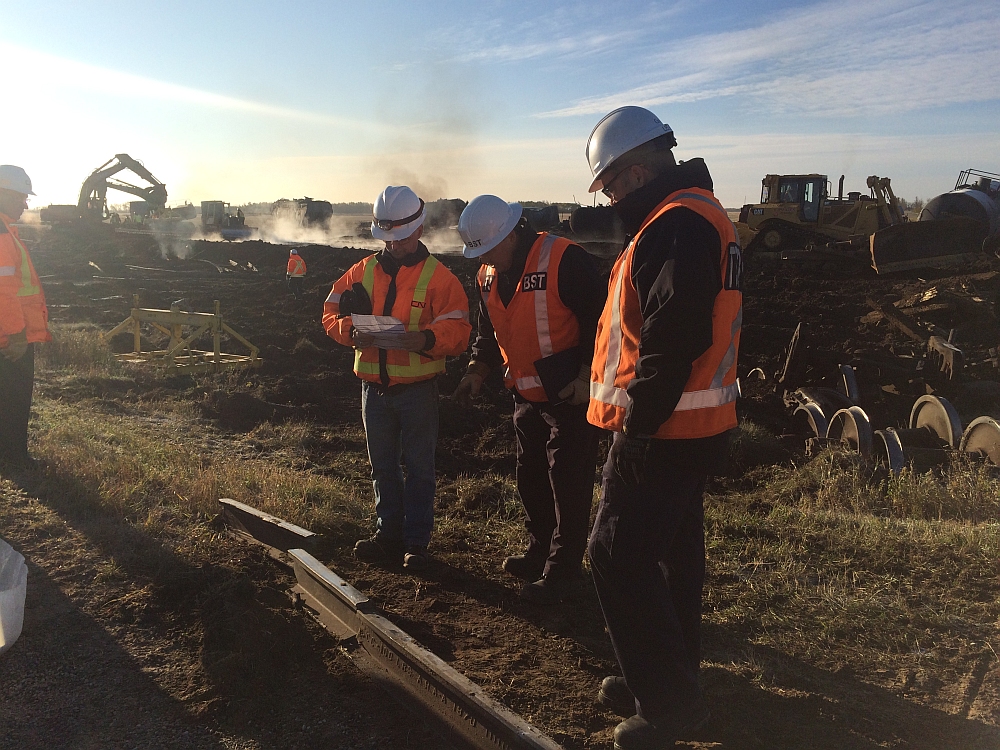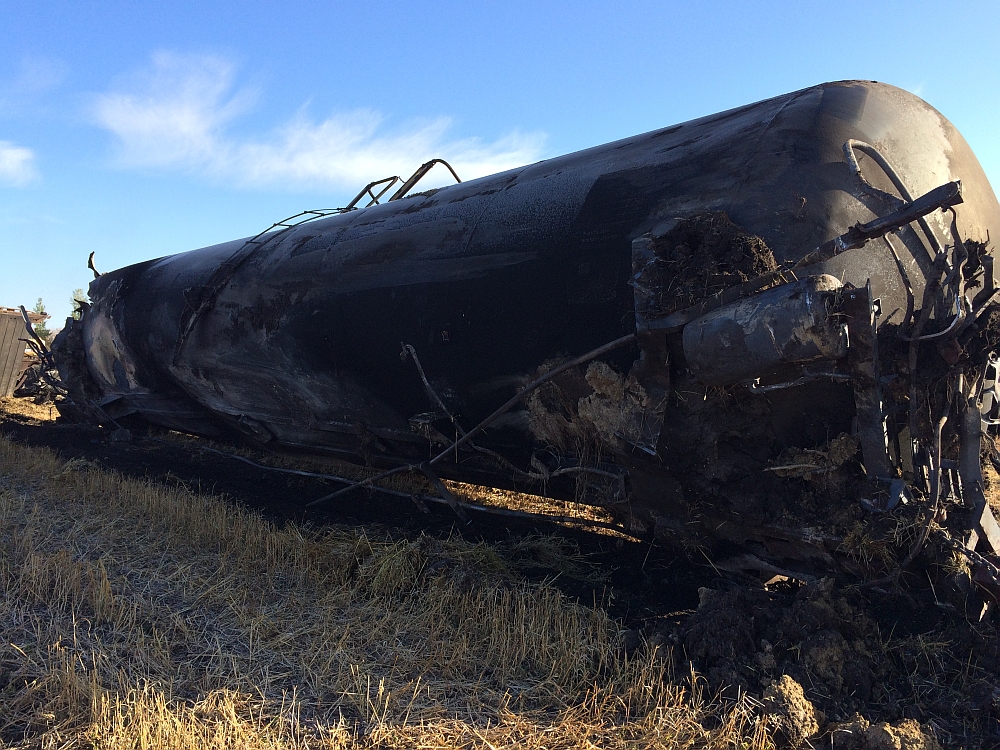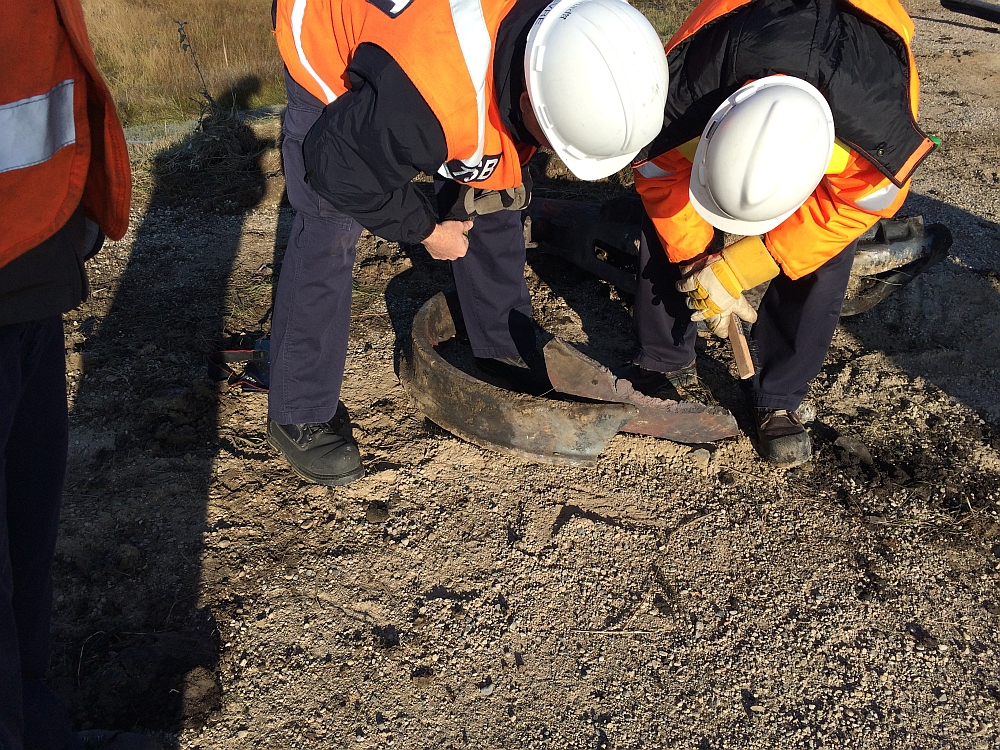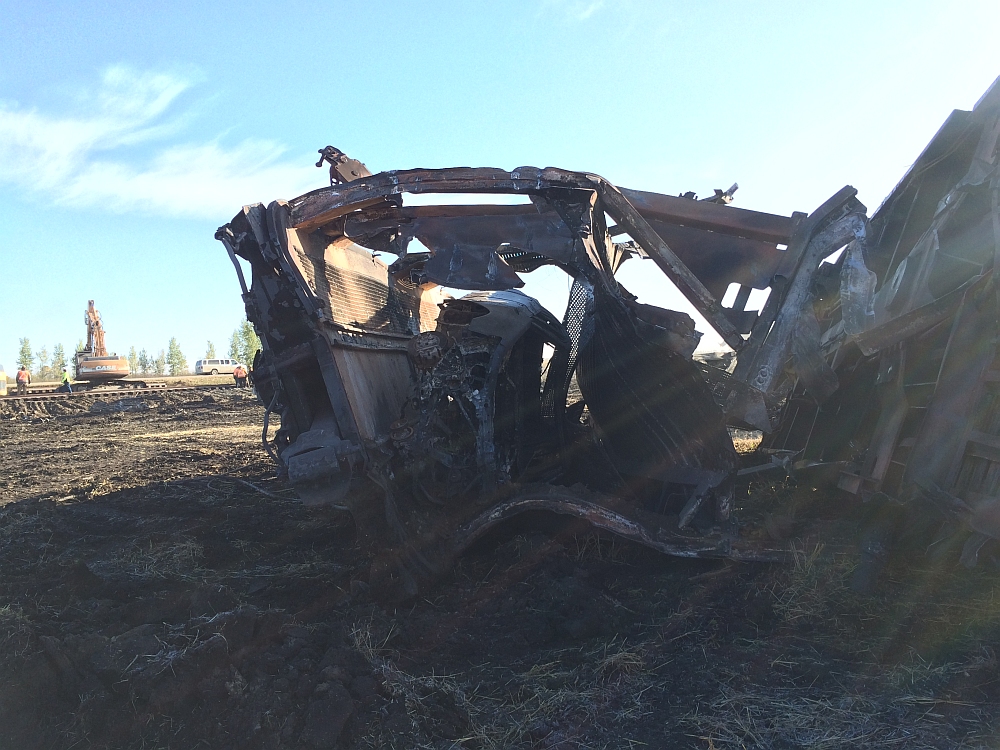Main-track derailment
Canadian National Railway
Freight train A40541-05
Mile 74.58, Margo Subdivision
Clair, Saskatchewan
The occurrence
On , at approximately 1135 Central Standard Time, Canadian National Railway Company (CN) freight train A40541-05 was proceeding westward on the CN Margo Subdivision when it derailed 26 cars, including 6 tank cars loaded with dangerous goods, at Mile 74.58 near Clair, Saskatchewan. Two of the tank cars, which were loaded with petroleum distillates (UN 1268), released product that subsequently caught fire. As a precaution, approximately 50 residents within a two-mile radius were evacuated and Provincial Highway 5 was closed. Approximately 650 feet of track was destroyed. There were no injuries.
Media materials
News release
Update on the train derailment and fire near Clair, Saskatchewan
Read the news release
Deployment notice
Transportation Safety Board of Canada deploys a team of investigators to derailment in Clair, Saskatchewan
The Transportation Safety Board of Canada (TSB) is deploying a team of investigators to the site of a derailment involving a Canadian National freight train near Clair, Saskatchewan, approximately 200 kilometres east of Saskatoon. The derailed cars were carrying dangerous goods and fires were reported. The TSB will gather information and assess the occurrence.
Investigation information
Download high-resolution photos from the TSB Flickr page.
Class of investigation
This is a class 3 investigation. These investigations analyze a small number of safety issues, and may result in recommendations. Class 3 investigations are generally completed within 450 days. For more information, see the Policy on Occurrence Classification.
TSB investigation process
There are 3 phases to a TSB investigation
- Field phase: a team of investigators examines the occurrence site and wreckage, interviews witnesses and collects pertinent information.
- Examination and analysis phase: the TSB reviews pertinent records, tests components of the wreckage in the lab, determines the sequence of events and identifies safety deficiencies. When safety deficiencies are suspected or confirmed, the TSB advises the appropriate authority without waiting until publication of the final report.
- Report phase: a confidential draft report is approved by the Board and sent to persons and corporations who are directly concerned by the report. They then have the opportunity to dispute or correct information they believe to be incorrect. The Board considers all representations before approving the final report, which is subsequently released to the public.
For more information, see our Investigation process page.
The TSB is an independent agency that investigates air, marine, pipeline, and rail transportation occurrences. Its sole aim is the advancement of transportation safety. It is not the function of the Board to assign fault or determine civil or criminal liability.



